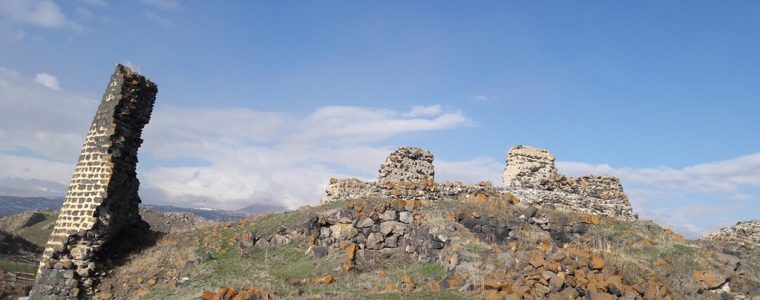
Location, structure and history: This monument is situated in the Eastern part of Berdkunq village om the bank of Sevan Lake. The site is accessible through the village road turning left from the Yerevan-Gavar highway. The
Cyclopean fortress stands on a big rock and dominating the surroundings. It is almost inaccessible from all sides except from Berdkunq village in the East. Through its external view and construction the fort is dated sometime around the II-I millennium B.C. It is also surrounded by the ruins of a settlement, and inside the borders one can notice shelter trails. From the West to East, nearly throughout all its length, the fort is hemmed in with rock trenches, and in the South-East angle they join another trench running towards the North. The total length of the
trenches is 275m. There are also other trenches extending in different directions.
These are mainly natural, small gorges and people through changing them have used them for protective purposes, the Lchashen fort is no exception. The trenches mentioned above possess 5m high natural and artificial walls. The
location of the Berdkunq Cyclopean fort is very strong prevailing over the surrounding countryside. Indeed, in the Middle Ages a new fortress called Spitak Berd (White Castle) was constructed over the ruins of the ancient fort by local inhabitants, as there is a limed remnant wall of the ancient fort. The locals call it Ishkhanac Amrots (Castle of the Prince).
This fort is often associated with a Medieval (10-13 c.) fort-town and overnight shelter station called Berdkunq situated in the District of Gegharkunik of Syunik Region or with the town of Azat. The fort is situated about 115km from Dvin (one of the capital cities of Armenia) and has played a significant role on the Dvin-Partav road during Arab rule. It has also been a very important trade centre and market where they were products were sold from different parts of the Gegharkunik Gavar Region. It was known for its shops, trading places and overnight shelters (ancient hotels). It was destroyed during the Tatar-Mongol invasions in 13-14c.